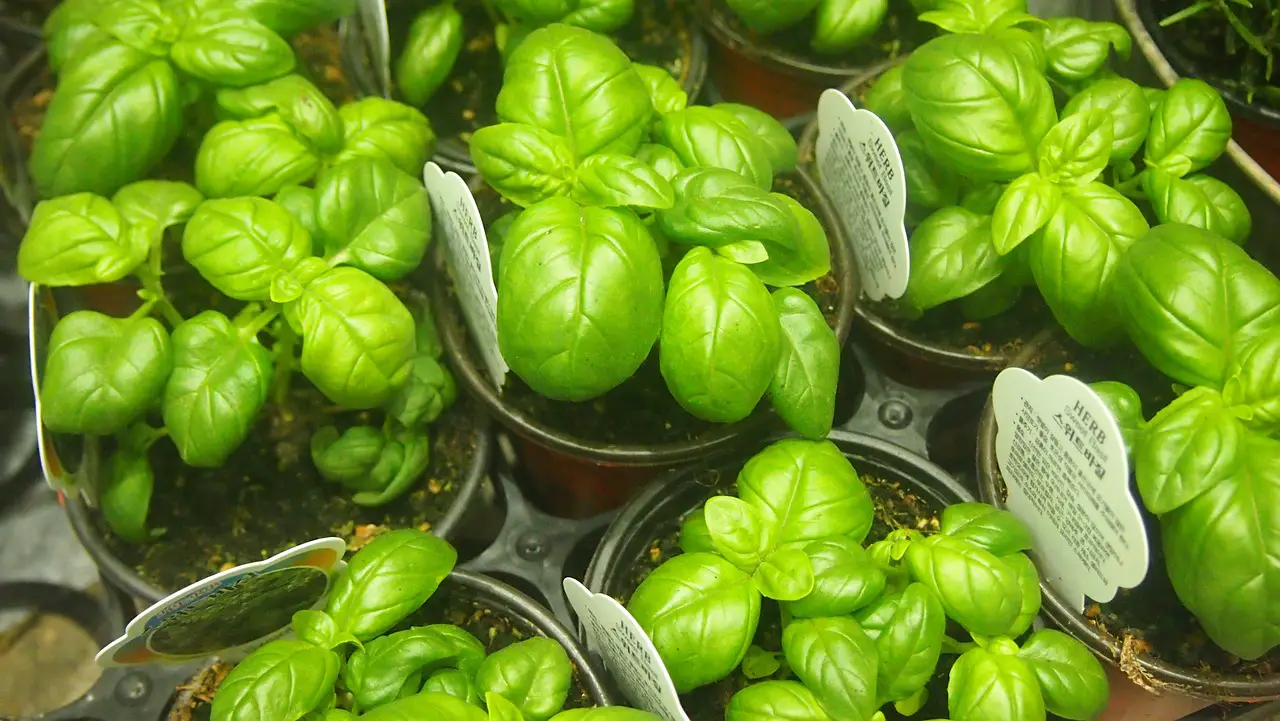
Growing sweet basil, a culinary favorite known for its aromatic and flavorful leaves, is a gratifying experience for both novice and seasoned gardeners. It differs a little from the more common basil but this versatile herb enhances a wide array of dishes, from classic Italian pesto to exotic Asian cuisine. In this comprehensive guide, we’ll explore the nuances of cultivating sweet basil, including starting from seeds, caring for the plant indoors, and tips for replanting. Whether you’re a gardening enthusiast or a culinary experimenter, this journey through the world of sweet basil will provide valuable insights and practical tips to ensure your basil thrives.
How to Grow Sweet Basil
Growing sweet basil begins with choosing a sunny, well-drained location. Basil loves warmth and sunlight, requiring at least six hours of sun daily. When planting, ensure the soil is fertile and well-aerated. Starting from seedlings or directly sowing seeds after the last frost is typical. Water the basil regularly, keeping the soil moist but not waterlogged. As the plant grows, pinching off the top leaves can encourage a bushier growth and prevent early flowering, which can affect the flavor. Regular pruning also promotes continuous leaf production, providing a steady supply of fresh basil.
Planting Sweet Basil Seeds
Starting sweet basil from seeds is a simple and cost-effective method. Sow the seeds indoors 6-8 weeks before the last expected frost, or directly into the garden when the soil has warmed. Plant the seeds shallowly, about 1/4 inch deep, in well-draining soil. Keep the soil consistently moist and warm, around 70°F, which is ideal for germination. Typically, basil seeds germinate within 5-10 days. Once seedlings have a few sets of true leaves, they can be thinned out or transplanted to give them ample space for growth.
How To Grow Sweet Basil Indoors
Growing sweet basil indoors requires a bright, sunny window or artificial grow lights, providing 6-8 hours of light daily. Use well-draining, fertile potting mix in containers with drainage holes to prevent waterlogging. Maintain a consistent watering schedule, allowing the soil’s top inch to dry between waterings. Fertilize monthly with a diluted liquid fertilizer and pinch off flower buds to encourage leaf growth. With proper care, indoor basil can thrive, offering fresh herbs year-round for your culinary creations.
How To Take Care Of Sweet Basil
Caring for sweet basil successfully requires attention to detail in several key areas:
- Sunlight: Sweet basil thrives in full sun, necessitating 6-8 hours of direct sunlight each day to develop its full flavor and aroma. A south-facing garden spot or windowsill is ideal.
- Watering: Basil prefers evenly moist soil. Water the plant when the top inch of soil feels dry to the touch, ensuring deep hydration without waterlogging, which can lead to root rot.
- Soil: Opt for well-draining, nutrient-rich soil with a pH between 6.0 and 7.5 to promote healthy root growth and vibrant foliage. Mixing in organic compost can enhance soil fertility.
- Spacing: Proper spacing, about 12-18 inches apart, is crucial for adequate air circulation around basil plants. This helps prevent fungal diseases and allows each plant enough space to grow lush and full.
- Fertilizing: A balanced, all-purpose liquid fertilizer every 4-6 weeks supports continuous growth. Over-fertilizing can harm the plant, so follow the recommended dilution rates.
- Pruning: Regularly pinching off the growing tips and flower buds of basil plants encourages a bushier growth pattern and delays flowering, ensuring a longer harvest period of the flavorful leaves.
By meticulously following these care instructions, you can enjoy a bountiful harvest of sweet basil, enhancing your garden’s beauty and your dishes’ taste.
How to Keep a Basil Plant Alive Indoors
Maintaining a basil plant indoors requires attention to light, water, and soil quality. Place the plant in a sunny spot, like a south-facing window, where it can receive at least six hours of sunlight. If natural light is limited, supplement with grow lights. Basil prefers moist, well-draining soil, so water when the top inch of soil feels dry. Overwatering or poor drainage can lead to root rot, so ensure the pot has drainage holes. Regular pruning encourages fuller growth and prevents the plant from becoming leggy. Fertilize monthly with a balanced, water-soluble fertilizer, especially during the active growing season.

How To Replant Basil
Replanting or propagating basil can rejuvenate an older plant or propagate new plants. To replant, choose a larger pot with good drainage and fresh potting mix. Basil can also be propagated by taking cuttings from an existing plant. Cut a 4-inch stem below a leaf node, remove the lower leaves, and place it in water. Roots will develop in a week or two, after which the cutting can be planted in soil. This method is an excellent way to multiply basil plants and ensure a continuous supply.
FAQ
How Often Should I Water My Sweet Basil Plant
Water your sweet basil plant when the top inch of soil feels dry, typically every 3-5 days, depending on indoor conditions and pot size. Ensure consistent moisture without over-saturating the soil to promote healthy growth.
Can Sweet Basil Be Grown In Pots
Yes, sweet basil can be successfully grown in pots. Choose a container with drainage holes and use well-draining soil. Ensure it receives ample sunlight and water regularly. Potted basil is ideal for balconies, patios, or indoor herb gardens.

